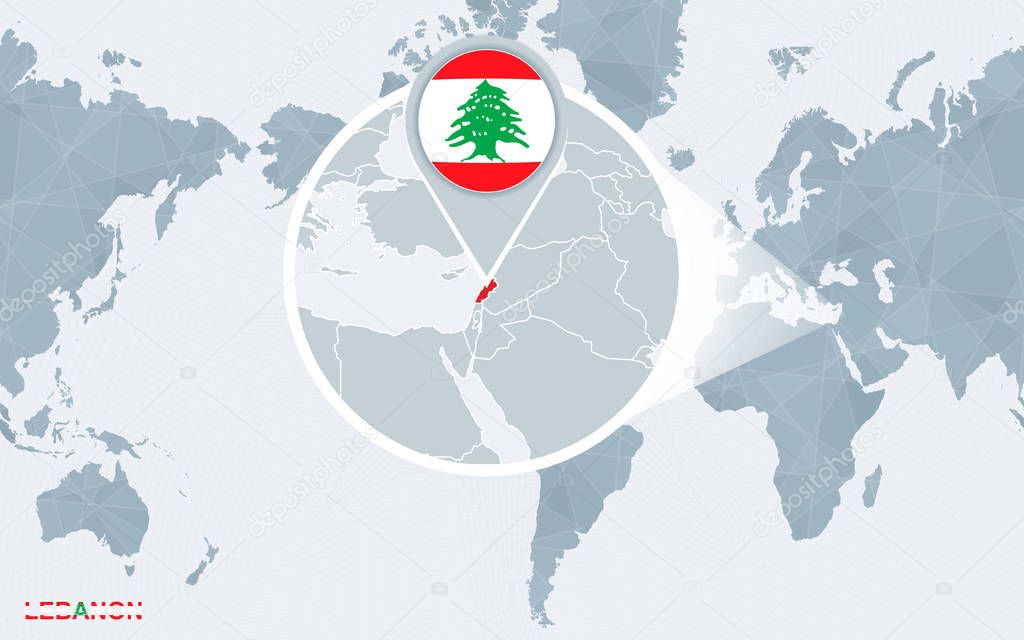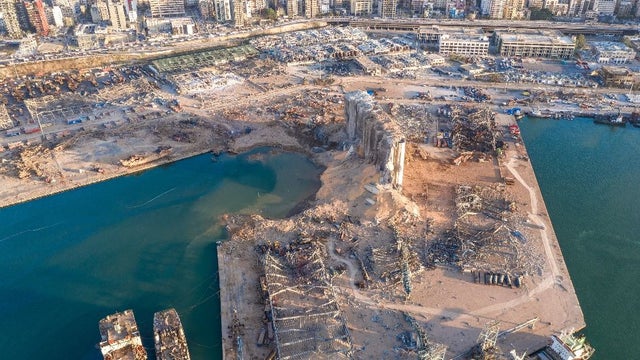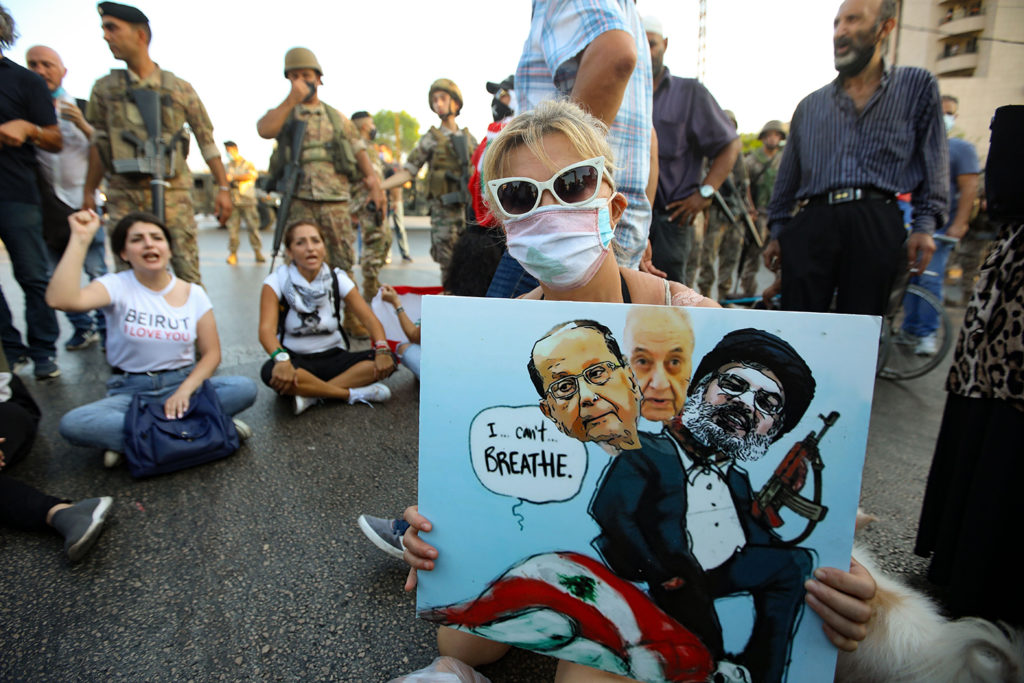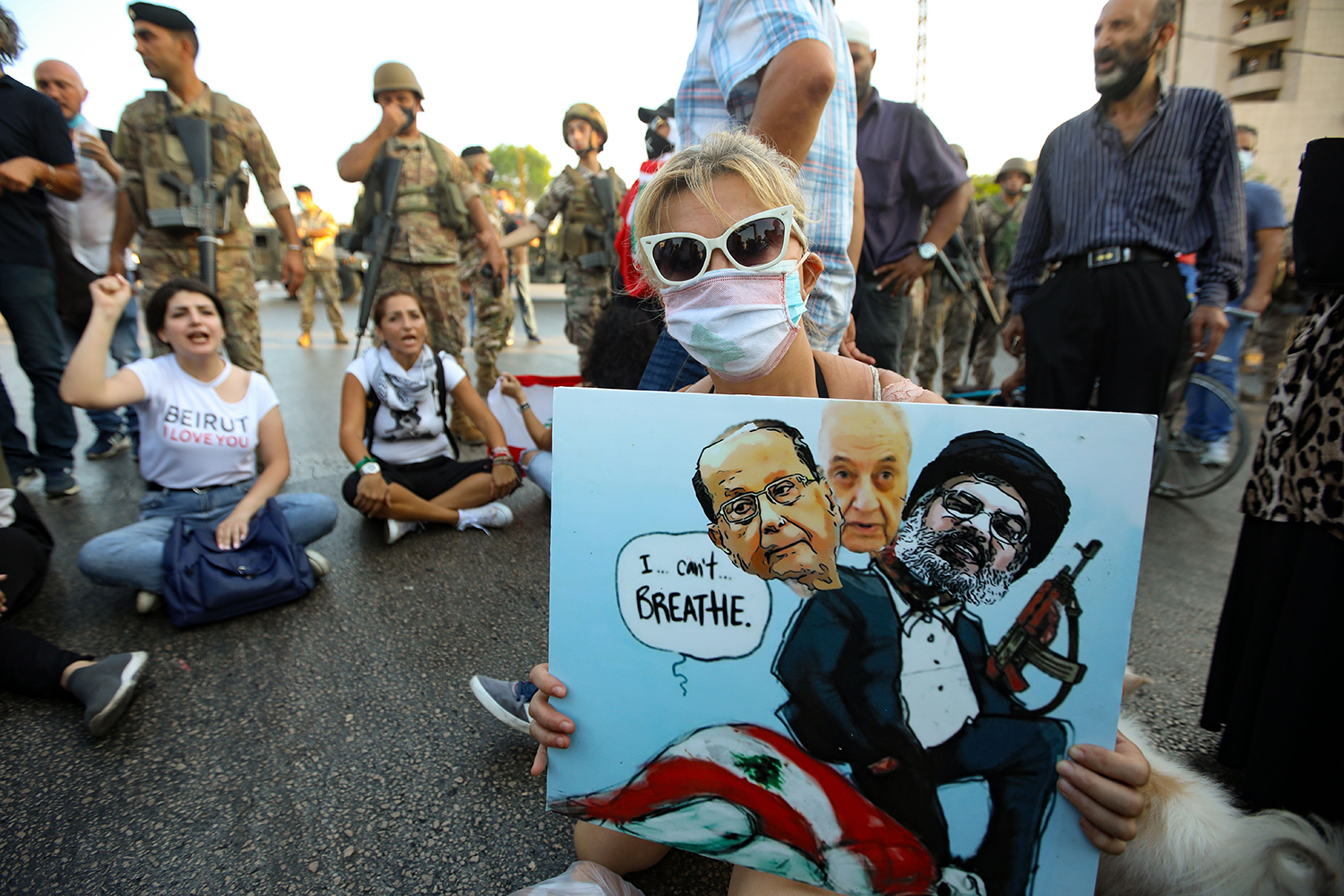
- By Kim Ghattas
No one summarized the essence of beirut better than the late celebrity food writer and chef Anthony Bourdain. The Mediterranean city he fell in love with was one, he said, “where nothing made any damn sense at all—in the best possible way.” He recommended that everyone visit, to “see how complicated, how deeply troubled, and yet, at the same time, beautiful and awesome the world can be.”
Bourdain went beyond the facile clichés of my hometown—that it is the Paris of the Middle East; that it rose like a phoenix after its civil war; that it is treasured for its clubbing and beach parties, its effervescent art and design scene, its food and general joie de vivre. He put his finger on something deeper: “Everything wrong with the world is here.”
Never has this felt truer than now, when Beirut, like much of the world, feels unmoored and broken, on hold but also changing rapidly, squeezed between the coronavirus, populism, and economic unraveling. Because it is Beirut, we experience all this with a crushing intensity. And because we are in Beirut, we’ve already been here. We know that waiting for the end of something, anything, does not truly provide a fresh start, and certainly not a return to the way things were before

Some 2,750 tons of ammonium nitrate that had been left lying around at the Beirut port caught fire, and a blast ripped through the city. The death toll stands at 204 but could yet rise with some of the 6,000 injured still in grave condition. The blast was one of the biggest nonnuclear explosions in global history.
In his campaign ads, Joe Biden promises a new beginning in the United States, with a vote for decency, empathy, love, and truth. But nothing is ever the way it was in the past, what is normal evolves constantly, and as the U.S. approaches Election Day, it’s worth pausing to ask: What has really changed over the past four years? How much of it will stay the same, regardless of who wins on November 3, and how much of it will become worse?
Much has been written warning of America’s slide into autocracy under Donald Trump, the politicization and corrupting of government institutions, the assault on civil rights. There have been comparisons to Germany in 1939, to Vladimir Putin’s Russia. With the new personnel that come with any new administration (should Biden win), with the presidential orders and different regulations, some of this can be undone, and a new tone and direction can be set from the top.
What will be harder to roll back are the more subtle changes: the shifts in social norms; the rise in intolerant attitudes; the spread of dangerous conspiracy theories (many emanating from the right); sharp uncivil exchanges; the unleashing of violent militias (mostly from the right); the deep polarization and obstructionist politics; and the extent to which each side sees the other as an existential threat to itself and its tribe. Some of these shifts started before Trump came to power, but all of them have been exacerbated or encouraged by his presidency. They will not disappear if he is voted out of office. They are the kind of changes that give rise to the question: What happened to us?
I have written extensively about the slow unraveling of a society, of its religion and culture, and that question haunted me throughout my research. What happened to us? In my case, I was writing about the Middle East, and the rise of extremism, cultural intolerance, bigotry, and, eventually, sectarian violence.
I can already hear the protests about comparing the United States, the world’s greatest superpower, to the Middle East. Of course, no countries, regions, or histories can be neatly compared, and it’s important not to overstate things. But as violence stalks so much of American political life, as the country’s leader publicly threatens his enemies and traffics in conspiracies, as the gulf widens between one side and the other, there are certainly parallels. Conspiracy theories, for example, used to be a Middle Eastern specialty, a way to reject responsibility for our failings by blaming omnipotent outside players, from the CIA to the Mossad, but I’m not the only one who thinks that QAnon is beyond anything we’ve ever heard in our own region. And while the rise of political Islam is particular to the Middle East, Trump’s nomination of Amy Coney Barrett to the Supreme Court brings into focus questions about the changing role of religion and dogma in American public life.
If you think the Middle East has always been as it is today, you are mistaken: There lies in the not-so-distant past a more vibrant, diverse, colorful, calm, tolerant Middle East, not only one with no militias or beheadings, but one with progress, hope, and development. Before there were killings over apostasy charges, there were public debates between secular and religious Muslim thinkers, attended by hundreds. Those who stood up for freedom of thought and expression, who critiqued the role of religion in politics, were many, and their critics were few. Over time, the numbers didn’t necessarily change but the balance of power did, with liberal thinkers cowed by the violence that fanatics were willing to deploy.
The first time a secular intellectual, Farag Foda, was killed in Egypt, in 1992, he was lauded as a martyr of the nation. His killers, radical Islamists, were reviled and branded as terrorists. Over time, as more free thinkers were assassinated, from Egypt to Pakistan, the voice of fanaticism became louder, rising above everything and everyone else, expanding the new in-group of people who value loyalty, moral purity, and power—or respect for power—above everything else. Nearly 20 years after Foda’s assassination, when a prominent Pakistani politician stood up for a Christian woman accused of apostasy, he was killed in broad daylight, and while he was quietly buried, his murderer was celebrated. (The normalization of violence against the other is a treacherous slope, and I watched with an uneasy sense of déjà vu the story of Kyle Rittenhouse, a gunman who killed two protesters in Kenosha, Wisconsin, and then walked over to the police to hand himself in while still armed. He was hailed by Tucker Carlson on Fox News for trying to maintain order and was described by his lead attorney as a patriot.)
Slowly, incrementally, much has been lost over the decades in the Middle East, and only today do people in the region grasp the magnitude of the change, as they look back to the 1960s and ’70s, and wonder how the past could be such a foreign country. In the beginning of this descent, what happened at the extremes was most evident to the naked eye. But the more insidious, corrosive change came as a result of the reaction by society at large. Divisions deepened—within communities, friendships, families. Rage toward the other side grew. The middle ground evaporated, and we entered a new normal.
While visiting the united states this year, I was struck by how many people asked me whether Americans would also wonder one day, What happened to us? Some were already asking themselves how their country could have changed so rapidly in just three years, even before the pandemic hit and the summer of protests began.
In 2016, I was still living in the U.S. and was covering the presidential election for the BBC. In March that year, I wrote a somewhat tongue-in-cheek piece about how being on the trail reminded me of the Middle East: from Trump acting and speaking like an autocrat whose people would love him no matter what to Ted Cruz taking to the podium and dedicating his Iowa victory to God, just like a Muslim politician would cry out, “Allahu akbar” (Arabic for “God is the greatest,” and deployed for anything from expressing joy at the birth of a child to sadness when someone dies).
When Trump was inaugurated, I was on morning duty, waking at 5 a.m. to catch up on the news and be ready for television soon after. It instantly became clear that Trump would continue to tweet from the White House, and his early-morning missives, buzzing on my phone, were like an alarm clock, setting the day’s agenda and immediately inserting an element into Washington life that I had only ever associated with living in the Middle East: uncertainty and anxiety, the utter unpredictability of what each day would bring—a Muslim ban, a threat against Iran, more verbal attacks against journalists.
I was not ready to deal with daily uncertainty in a country not my own—and certainly not for four years—so I headed back to Lebanon to focus on writing a book about the Middle East, to worry about my own country and its uncertainties, while observing America from a distance.
Today, I wake up every day in Beirut to headlines that have me confused as to whether they’re about the U.S. or Lebanon. There’s a New Yorker article about COVID-19 killing the middle class in America, juxtaposed with one in Foreign Policy about the death of the middle class in Lebanon, which has been convulsed by demonstrations since October 2019, with its economy, banking sector, and financial services unraveling at an alarming speed. The summer brought protests across the U.S., featuring armed men in Portland, Oregon, with no insignia taking people to unknown locations, similar to what protesters have recently endured in Lebanon and Iraq. Acting U.S. Secretary of Homeland Security Chad Wolf said that “all options” were “on the table” to end the protests, and Senator Tom Cotton advocated sending in the military to quell demonstrations—rhetoric similar to that used by dictators who crushed protests in Egypt and Syria. In November 2019, after a month of enormous demonstrations in Lebanon, our president, Michel Aoun, declared that those who don’t like how the country was run could emigrate. In a slightly different context, Trump had said five months earlier, “If you’re not happy in the U.S. … you can leave.”
Perhaps the most jarring and painful moment came this past August 4, when I watched clips of an interview Trump had given the night before to Axios on HBO, during which he dismissed the pandemic death toll—then 150,000 in the U.S.—by saying simply, “It is what it is.” This type of dismissive callousness, the utter rejection of responsibility even in the face of preventable calamity, has dominated the politics of Lebanon for decades.
That evening, at 6:07 p.m., everything that was wrong with Beirut—and maybe the world—seemed to come together and, quite literally, explode. Some 2,750 tons of ammonium nitrate that had been left lying around at the Beirut port caught fire, and a blast ripped through the city. The death toll stands at 204 but could yet rise with some of the 6,000 injured still in grave condition. Even for those of us who lived through 15 years of civil war, the unspeakable trauma of those 15 seconds was unlike anything we have experienced. It was the worst day of my life. Something broke, perhaps irreparably. The blast was one of the biggest nonnuclear explosions in global history. The whole world, frozen for six months by the pandemic, seemed to turn its attention to the apocalyptic scenes in Beirut.
Like the coronavirus death toll in the U.S., this tragedy was preventable. Lebanon’s leaders knew about the chemicals at the port. To this day, no one in a position of authority has taken responsibility. No official has visited the wounded or the bereaved. The president even declared that he had been told about the ammonium nitrate but that it hadn’t been his responsibility to do anything about it—in other words, it is what it is.
We Lebanese have an inflated sense of self-importance, of how much we matter to the world. But still: There is something about this city, layered as it is with the influences of its invaders and occupiers, from the Romans to the Muslim conquests, from the Crusaders to the French Mandate, and even the more recent Syrian occupation of the 1980s and ’90s. The Lebanese capital is the last surviving Levantine urban center, truly cosmopolitan before the word became global.
Yet it is also here that the violence of the Cold War played out in proxy battles through the 1970s and ’80s, where Grand Ayatollah Ruhollah Khomeini planted the seeds of his Islamic revolution on the Mediterranean coast, where all kinds of revolutionaries from around the world came to train—from the Japanese Red Army to the German Baader-Meinhof Group. It was here that American troops first went to war in the Middle East, in 1958, and then again in 1983, and here, too, that the first attacks were carried out against Americans: hijackings, kidnappings, murders, and suicide bombings. Beirut seems to function as a laboratory for the world, a petri dish of ideas, a cautionary tale.
Just as the Cold War was wrapping up, the Lebanese civil war finally came to an end, thanks to an unspoken quid pro quo between the U.S. and Syria, in which the Syrian dictator Hafez al-Assad agreed to participate in Operation Desert Storm to free Kuwait from Saddam Hussein’s army and Syrian troops were allowed to begin what would become the years-long occupation of Lebanon. That period helped give birth to a new era, George H. W. Bush’s New World Order. (It seemed ironic that Beirut exploded almost exactly 30 years after Iraq invaded Kuwait, as though that New World Order were also being destroyed.)
The fanaticism, rage, and violence birthed by Lebanon’s civil war also changed the society and politics of the country, from the hardening of the physical and geographical separation between communities along sectarian lines to the entrenchment of intolerant religious attitudes among both Christians and Muslims. These changes were not going to be reversed simply because the war that had fostered them had ended.
During the 1990s, Lebanon became a poster child of a laissez-faire economy gone wild, and it now requires a bailout from the International Monetary Fund. Political parties and militias held sway, none more so than Iran’s ally and proxy, Hezbollah, the Shiite militant group and political party. Corruption became rife, the powerful and well-connected were barely subject to the rule of law, and the warlords of the civil war took charge of running the country. After 2014, Lebanon became home to more than 1 million refugees, on top of the estimated 180,000 Palestinian refugees still here—in a country with a population of just around 4.5 million, absorbing numbers no others would take. Finally, in October 2019, popular protests erupted over corruption, inflation, poverty, sectarianism, and Hezbollah’s power, alongside an entrenched elite. Through all this, even as deep polarization set in and darkness engulfed the region, Lebanon and Beirut managed to somehow hold on to creativity, cosmopolitanism, and tolerance. Retaining that center is what has allowed the country to keep reinventing itself. This is where the hope has always been. And then came the devastating port blast.
More than two months after the explosion, the world has moved on, hunkering down again in a second or third wave of the pandemic. As are we, even as we lick our wounds, bludgeoned by the repeated, accumulating crises, trying to rebuild our city and salvage what’s left of our savings, while asking for the kind of justice and accountability that never comes in this country, or this region. Throughout, our leaders pretend it’s business as usual, bickering over who will get what share of the ever-diminishing pie.

What now? Allow me to quote Bourdain again, on Beirut: “Everyone should experience, even as the clouds gather, what’s at stake, what could be lost, what’s still here.” So much has been lost in Lebanon, slowly over the years and then quickly in the last 12 months. We are witnessing the rapid, and perhaps irreversible, death of a nation, with dire consequences for the world, especially Europe, which may have to face a new set of refugees, Lebanese this time, crossing the Mediterranean. Lebanon continues to be a playground for Iran, Turkey, and Saudi Arabia. But so much is still here, a place of unbelievable possibility, trying to find its way forward, out of the limbo, the impunity, the pandemic, into the future.
Much the same could be said of America. Everything wrong in the U.S. and everything wrong in the Middle East—the two seem inextricably linked, mirroring each other.
Countless articles have now been written about why the Middle East doesn’t really matter anymore, neither to U.S. foreign policy nor to U.S. interests. There is certainly a case to be made for rethinking America’s Middle East policy, and it’s not simply about either disengaging or maintaining boots on the ground. There are lessons that can be learned from the region, from Beirut, about rolling back the anger, the rage, the intolerance, and finding the center again. Perhaps in searching for the middle ground, both in the Middle East and in the United States, we can finally answer the question: What happened to us?
KIM GHATTAS is a nonresident senior fellow at the Carnegie Endowment for International Peace and author of Black Wave: Saudi Arabia, Iran and the Forty-Year Rivalry That Unraveled Culture, Religion and Collective Memory in the Middle East.


Leave a Reply
You must be logged in to post a comment.